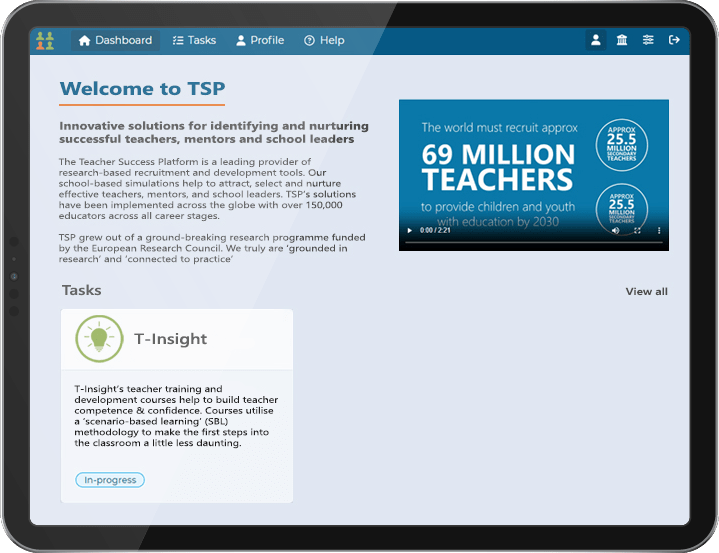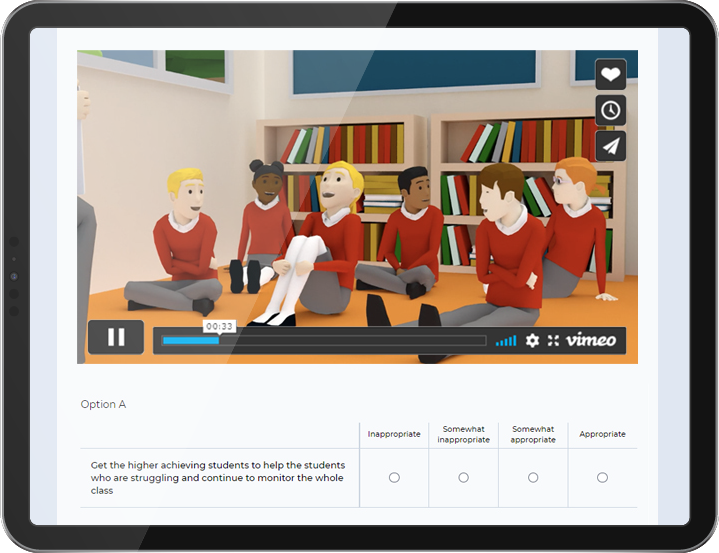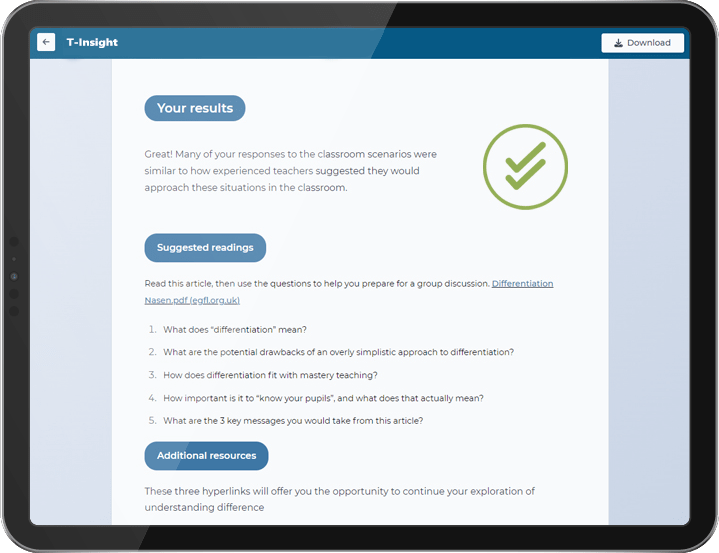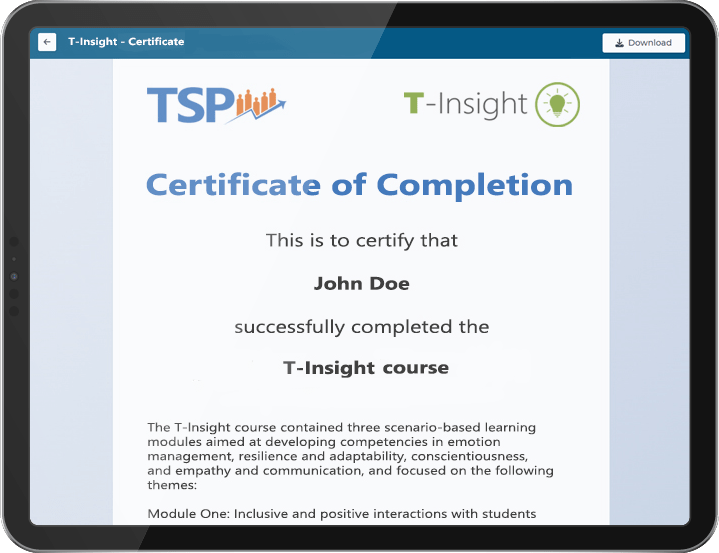
Responsive Teaching
Primary
Our Responsive Teaching Primary course helps you identify students who are struggling and adapt your teaching in a responsive way. Ideal for beginning teachers within Primary education.
Course Summary
| Target Audience | Delivery Mode | Time to complete |
|---|---|---|
| Beginning teachers (Primary level) | Online | 4 hrs |
| Learning Objectives |
|---|
| Develop your emotion management, communication & empathy, resilience & adaptability, organisation & planning, growth mindset and conscientiousness competencies. |
| Reflect on teaching scenarios you are likely to encounter and consider how you might respond. |
| Develop your understandings, skills and expertise related to adaptive teaching. |
| Develop your teaching self-efficacy. |
| Module | Overview |
|---|---|
| Module One: Understanding Difference | The vital importance of understanding that no two pupils are alike, and that teachers need to adapt their teaching to the pupils in front of them. There is no “one size fits all”, and neither do pupils necessarily fit neatly into neat categories. Meeting the needs of all pupils needs to be managed without creating an unmanageable workload. |
| Module Two: Targeted Support | Recognising students in need of targeted support, for example, due to absence, falling achievement, specific learning needs and adopting appropriate strategies such as effective modelling, framing and reframing, assessment for learning and vocabulary development. |
| Module Three: Flexible Grouping and Other Approaches | Flexible grouping can be found in two forms: Homogenous (same skill level), heterogeneous (varied skill level) The purpose is to group students for the length of that learning goal or skill. Grouping can be based on a collective weakness, which can then be addressed with targeted teaching. |
| Module Four: Supporting Students with additional needs | The importance of having high expectations for all and not limiting the ambition of pupils with additional needs. The importance of inclusive practices especially for students with Special Educational Needs (SEND) and English as an Additional Language (EAL). Understanding the difference between equality and equity, and what that means for teaching pupils with SEND and EAL. |
Course Structure
This course uses a ‘scenario-based learning’ approach to enable you to reflect on realistic school-based scenarios, consider how you might respond, and receive real-time, tailored feedback from experienced teachers. It is designed to support your continued professional learning by facilitating your engagement with a range of situations you may encounter in your own classroom in a virtual environment.

Get started
Once enrolled, participants will be sent an activation email. This will allow them to create a TSP account and access the course through the dashboard.

Scenarios
Each module includes five scenarios where beginning teachers will view the scenario, rate the appropriateness of three possible responses and write a brief rationale for each. Next, they find out how experienced teachers rated each response and most importantly why.

Feedback reports
Feedback reports at the end of each module show new teachers their overall alignment with experienced teachers and include resources, readings and strategies for practice.

Evidencing
Once participants complete the course, they will be able to download a comprehensive report as well as a certificate of completion.

Track progress
Organisations can login to track participant progress, identify individuals in need of additional support and evaluate the effectiveness of the course by viewing individual and collective data.

